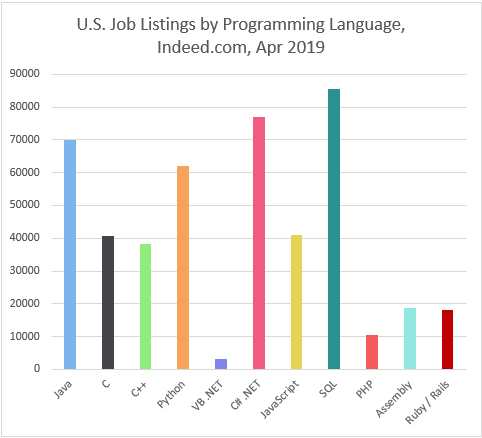Throughout the world, talented, motivated and ambitious students receive an education that is completely out of sync with market needs. It’s a sad thing to say, and even sadder when you are a part of it.
Businesses that have traditionally turned to universities for qualified candidates are finding they can no longer do so.
In 2015, Ernst and Young, multinational professional services firm, announced that its UK offices would no longer require college degrees, stating that internal research at the company had found “no evidence” that success in university studies correlated with achievement in professional qualifications. Rather than require college degrees, the company would use a series of assessments to determine the potential of applicants, and then train them internally.
Other employers have followed EY’s example. Google states that more than 50% of its employees have no college degree. Other companies that have dropped this requirement include Apple, IBM, Bank of America, Penguin Random House, Costco Wholesale, Whole Foods, Hilton, Publix, Starbucks, Nordstrom, Home Depot, Chipotle, and Lowe’s.
Why the sudden disinterest in college-educated candidates?
The demand for skilled developers to fill the needs of emerging markets continues to grow faster than such developers can be produced. Traditional educational institutions, such as colleges and universities, have proven unable to keep pace with the rate of advancement in the industry.
The lengthy accreditation process required by governmental entities (which can be as much as 4 – 5 years) often renders new topics obsolete by the time they finally make their way into classrooms. Consequently, most university programs focus on theoretical learning and outdated technologies.
The TIOBE Index Fallacy
The TIOBE Index – considered an “accurate” measure of a language’s popularity at any given time – is often used by developers, businesses, students, professors and university administrators as a source of wisdom in evaluating the “best” or “most in-demand” programming languages. But there are some significant and fundamental flaws in using this index as a means of measurement.
First, the TIOBE Index is calculated using three variables:
1. the estimated number of skilled engineers world-wide – this is the number of skilled developers currently working in that language, not the number of skilled engineers needed;
2. the number of academic courses offered for the language at educational institutions – this creates a “let’s do it because everyone else is doing it” reaction, meaning that the more institutions there are teaching antiquated technologies, the more institutions will continue to teach antiquated technologies;
3. the number of third-party vendors providing solutions based on the language – this is a helpful statistic only if measured by the number of employment positions needed to sustain and maintain those solutions, not the number of vendor solutions currently in use.
Second, the TIOBE Index is calculated almost entirely from data collected from search engines.
The more people search for information about a language, the more popular it is assumed to be. But that’s not really a correct assumption, is it?
For languages lacking sufficient documentation or a user-friendly and intuitive IDE, there will naturally be a lot of queries online. Visual Studio is the Cadillac of IDEs, and it makes C# a breeze to code in, thanks to its use of Intellisense. It’s so helpful and user-friendly, in fact, that a developer seldom needs to resort to asking Google for help.
The TIOBE Index tells us which languages developers ask the most questions about. If you’re busy writing great code in a great IDE with Intellisense as your partner, you’re not asking Google anything.
And finally, according to its creators, the TIOBE Index is NOT an indicator of either of the following:
1. the best programming languages to learn
2. the languages in which the most code has been or is currently being written.
So, we have to ask: Why would anyone use such a measure to determine the best languages to learn (or teach) when the authors of the measure specifically state that it is NOT an indicator of the best languages to learn?
Consider the following graph:

Figure 1: TIOBE Index of programming languages (Apr 2019)
According to this graph, the two languages that a future developer should consider learning first are Java and C. This is an accurate picture of what universities across the country are currently teaching.
Now let’s look at a snapshot of the current state of the U.S. job market in terms of positions available requiring expertise in these same languages. (We’ve added Ruby/Rails to the list despite not being listed on the TIOBE Index simply because a large number of Coding Bootcamps use it as their base language.)

Figure 2: U.S. Job listings by programming language (Indeed.com, Apr 2019)
It’s interesting to note that the greatest number of available jobs require expertise in SQL and C#, two languages at the bottom of the TIOBE Index.
With these perspectives in mind, it appears that universities continue to teach their computer science students technologies of the past, rendering their educational experience woefully inadequate.
Interested in .NET? Discover the OpenClassrooms .NET Developer Program.
Looking Ahead
Now is the time to think about how to build a vibrant economy for the future. As technology expands to touch virtually every industry, the demand has never been greater for talented developers and engineers trained in the languages that are most in demand today, and that will be in demand tomorrow.
This is why alternative IT education, such as online schools and coding bootcamps, exist.
Stay tuned for more on this topic. In my next post, I’ll talk about .NET development and why it might be the next language/platform you should learn to stay competitive and grow professionally. We’ll also dispel some common myths about .NET and show how it’s not as difficult to learn as you might think.
About the Author

Andrew Jensen has spent more than 25 years in the IT industry and in academia as a business owner, manager and director, corporate trainer, software developer, technical writer, research scientist, teacher, and student. He is the co-founder and CEO of jTEC Web Services and jTEC University, and the author of the curriculum in use at Coder Foundry, a .NET-based coding bootcamp located in Kernersville, North Carolina, USA.
Andrew’s research work, both in the effects of risk on technology acceptance and in IT education through embodied pedagogical agents, has been published in international academic journals and various conference proceedings. Andrew also teaches .NET for OpenClassrooms.
—
Learn about OpenClassrooms’ programs where you’ll learn the most in-demand skills in development, data, design and beyond.









